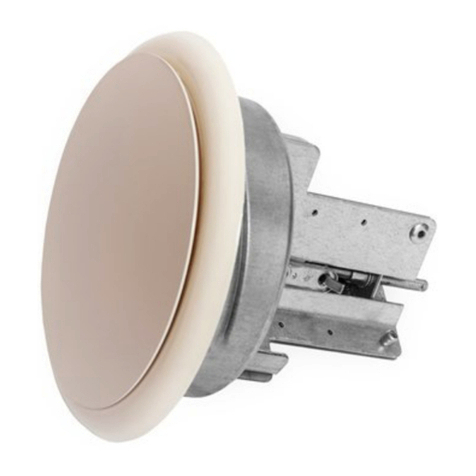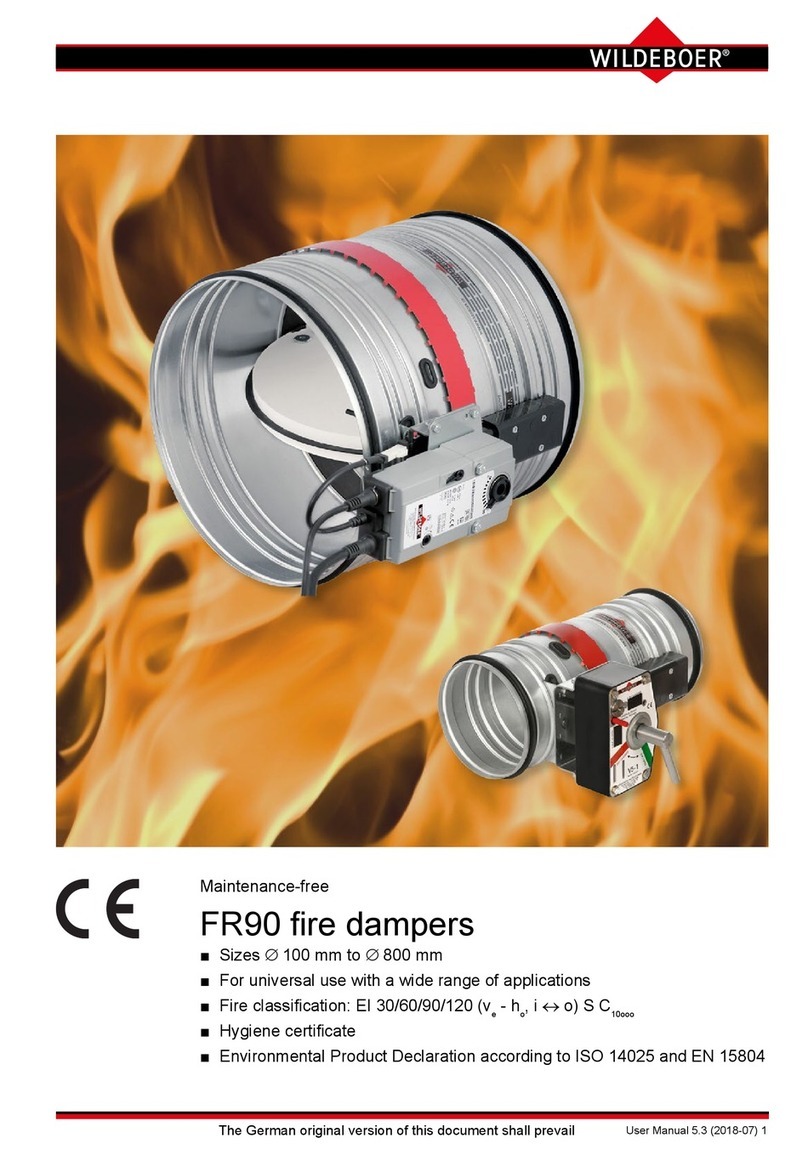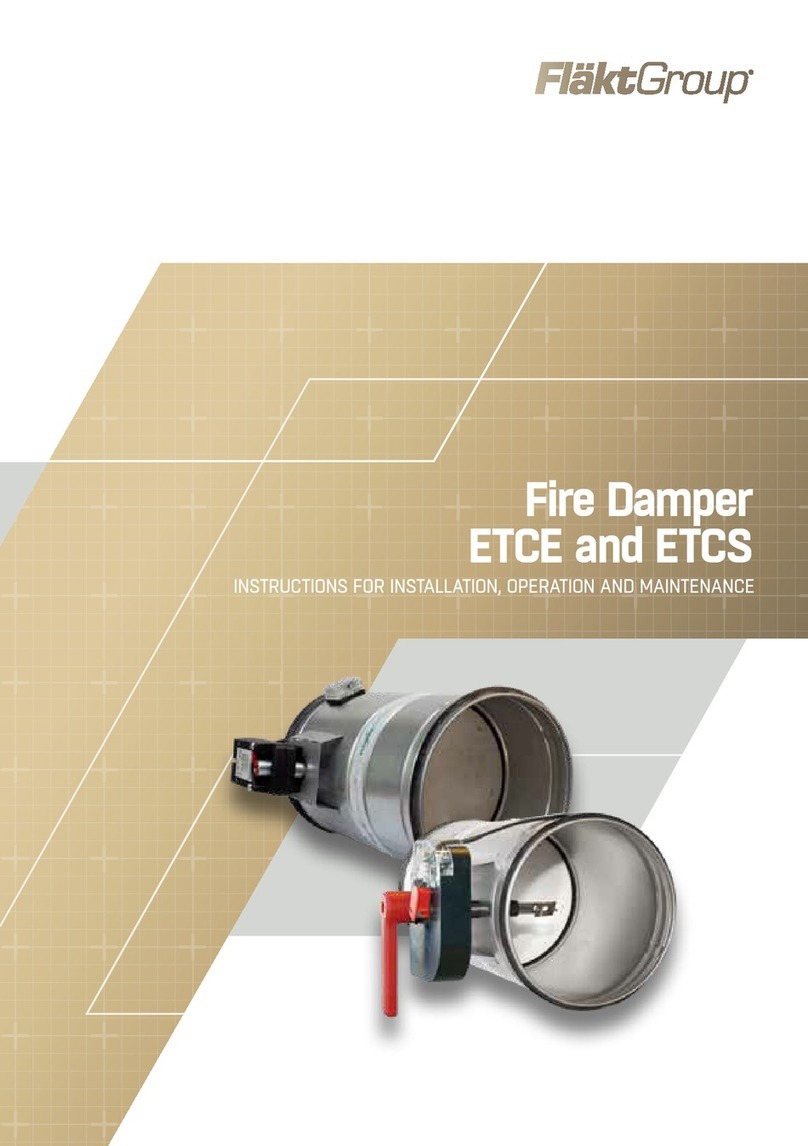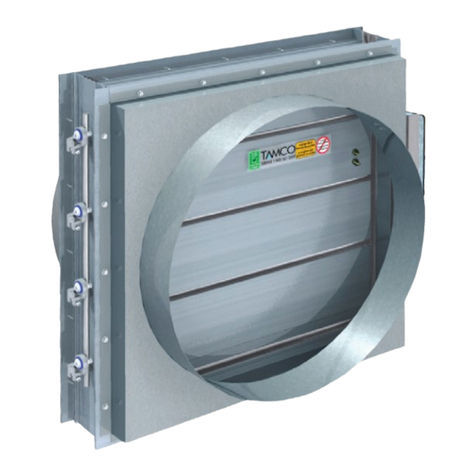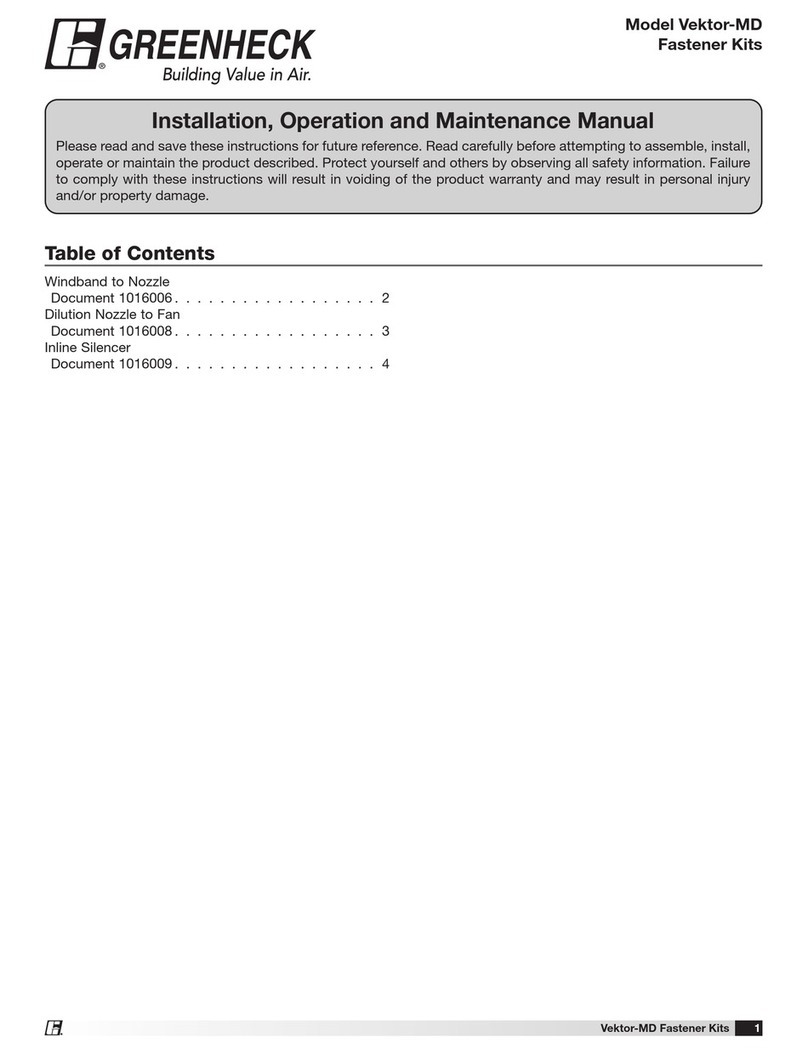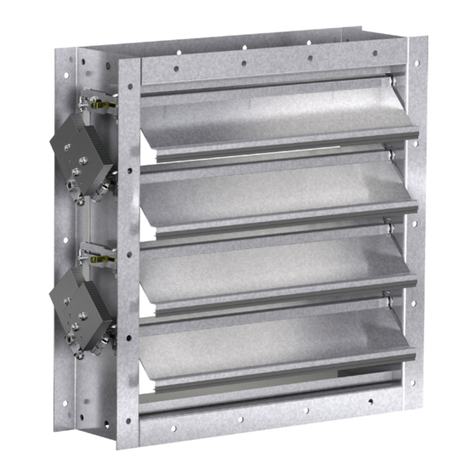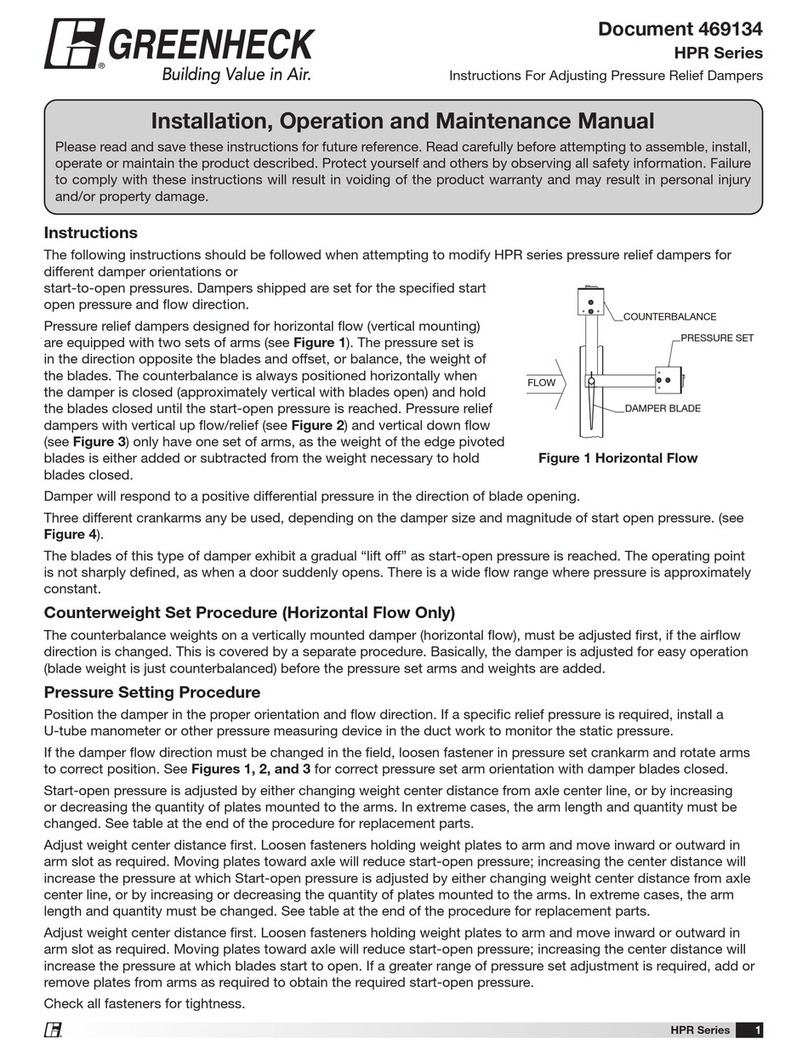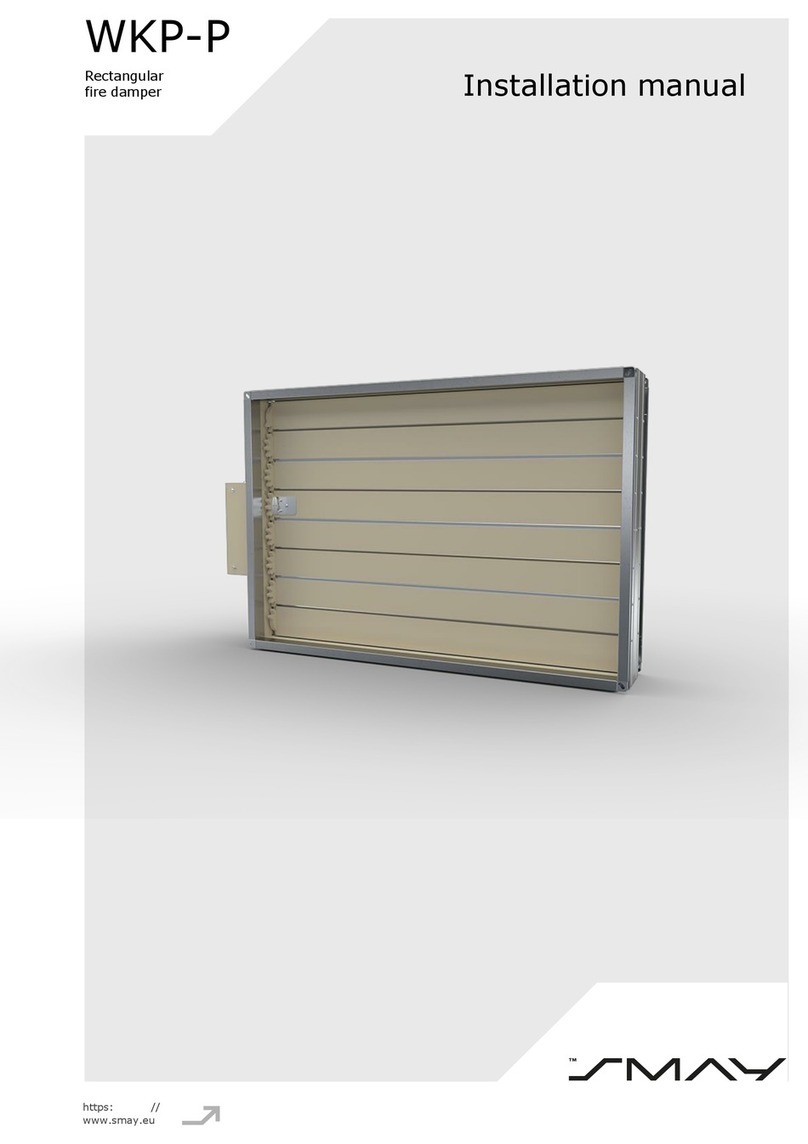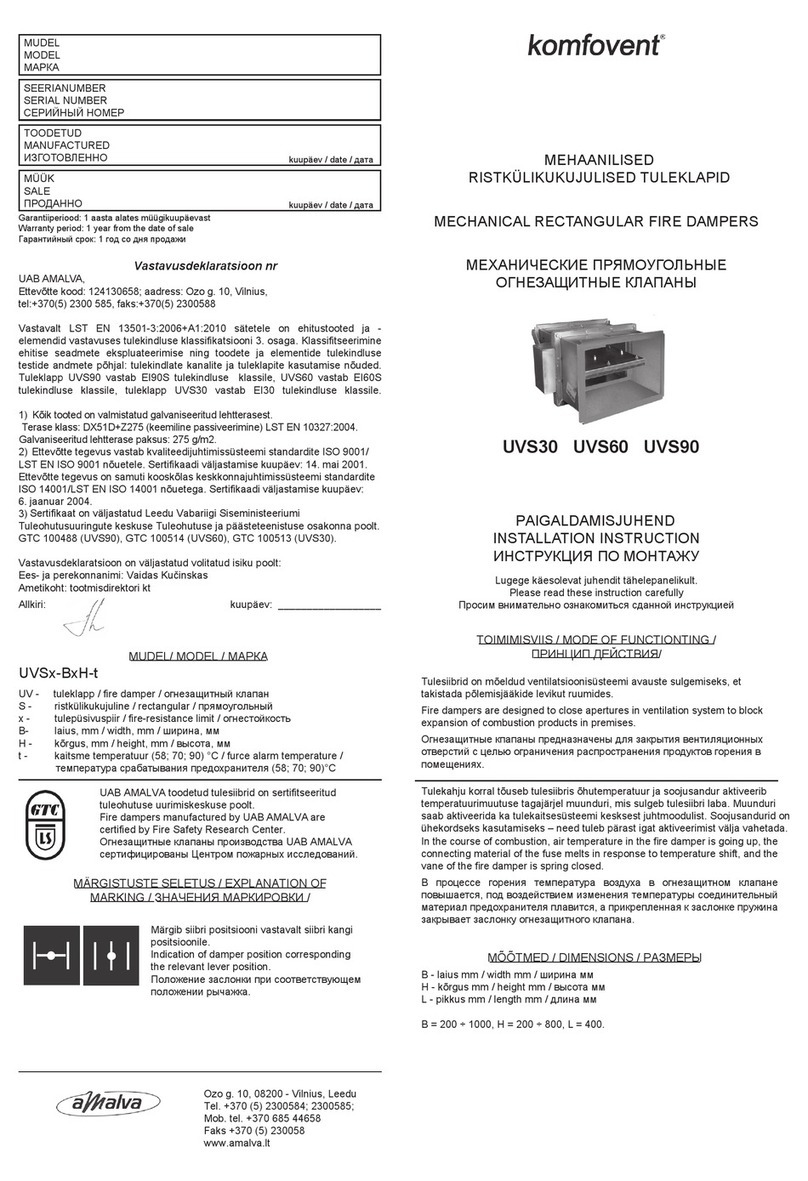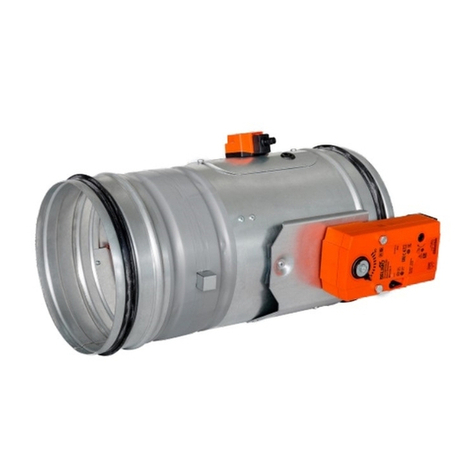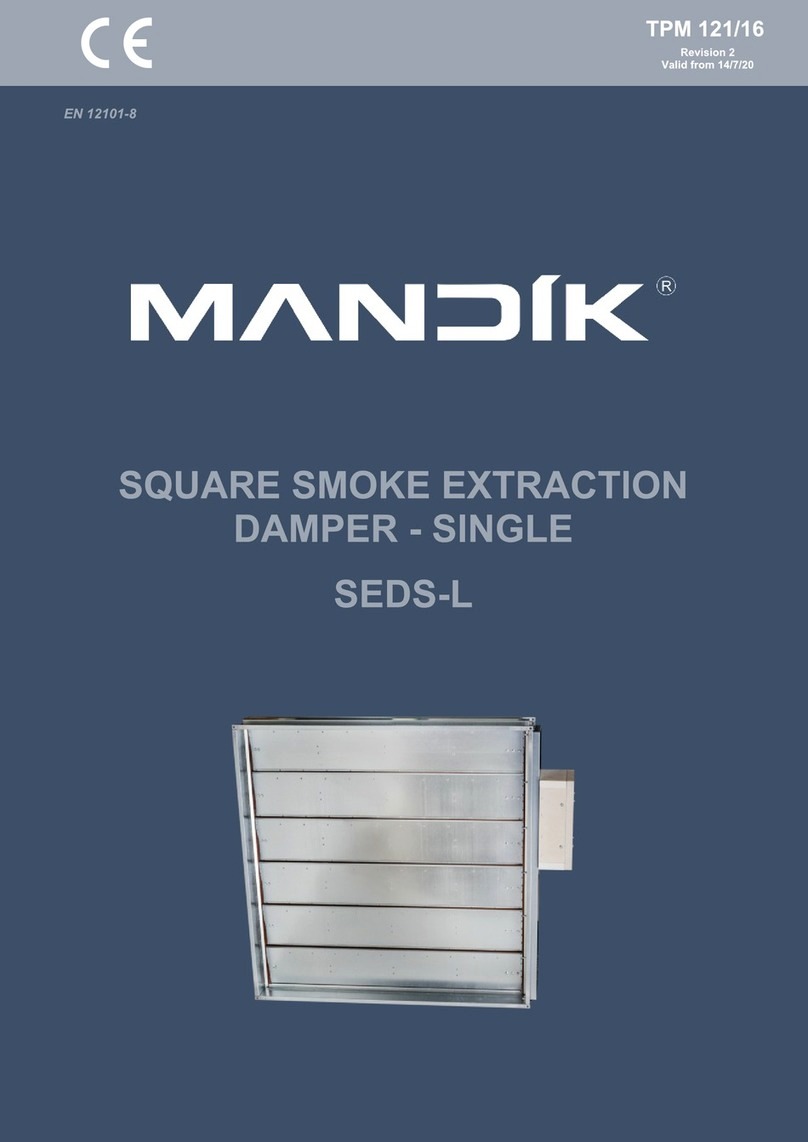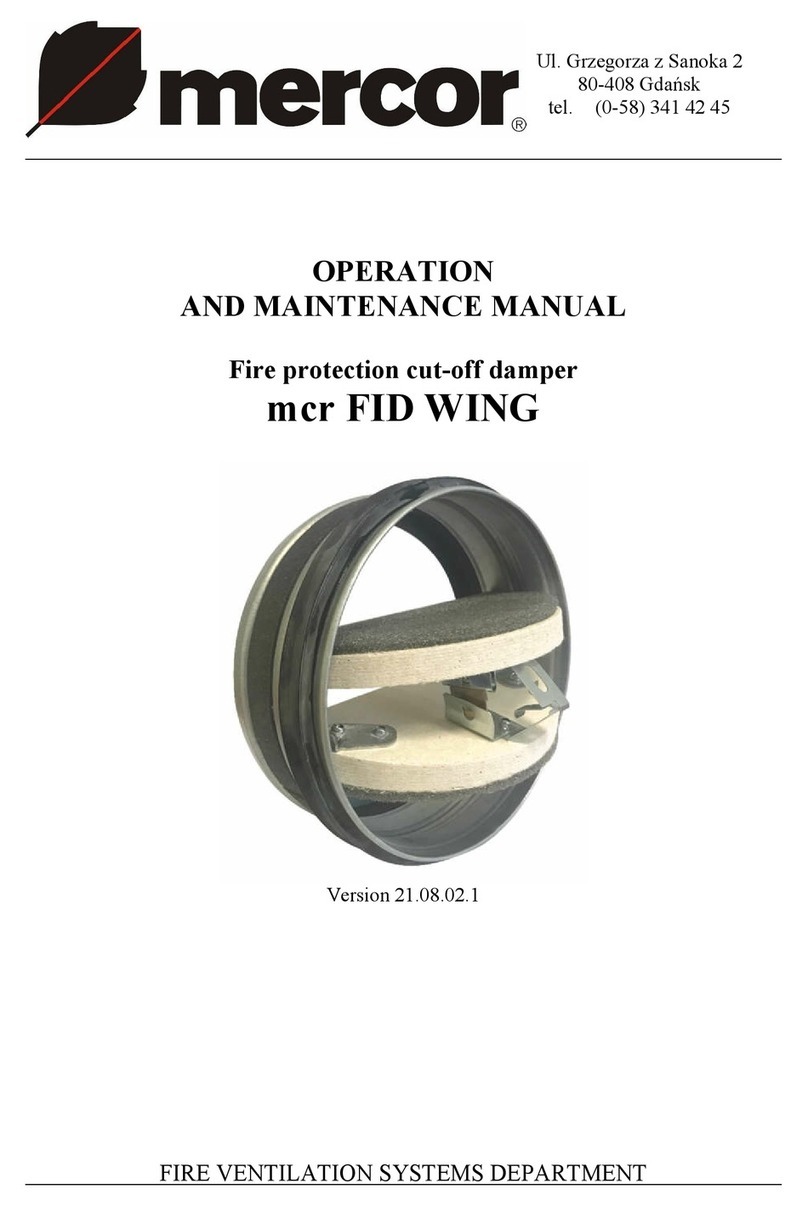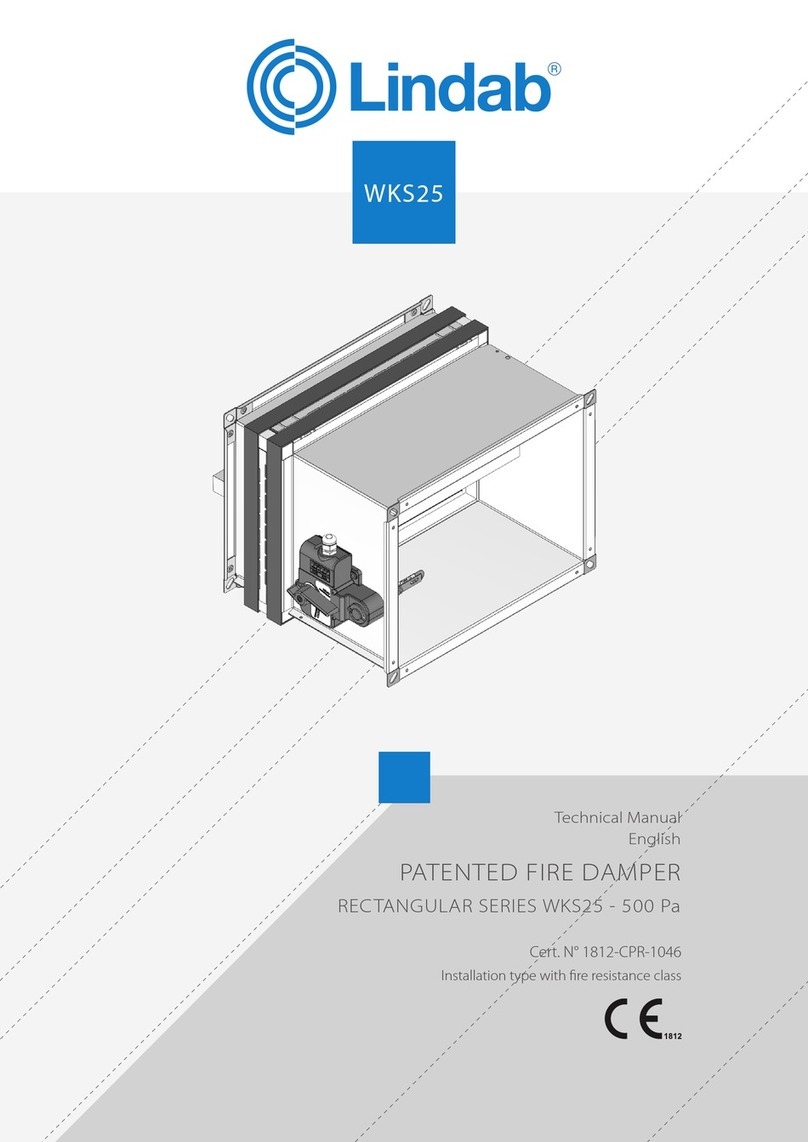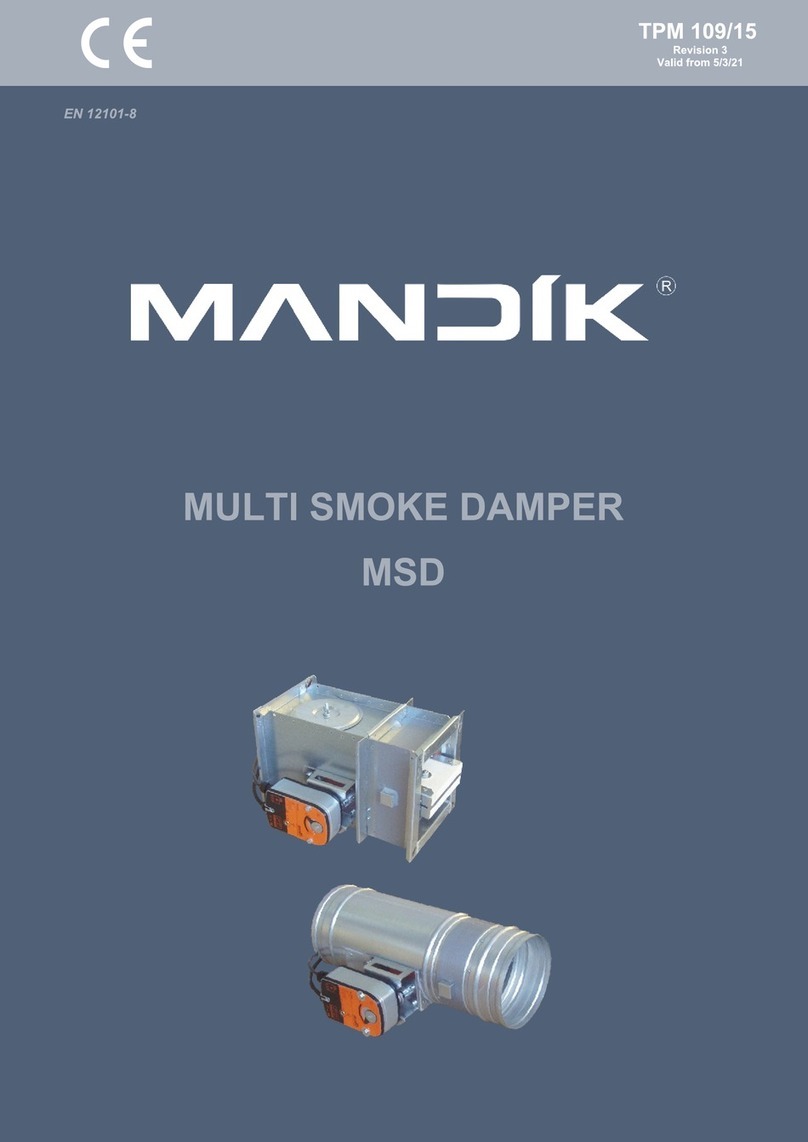
4
EN FVFA Series
North America Only
Principle of Operation
The EN Free Vent Flame Arrestors prevent flame propagation
by absorbing and dissipating heat using spiral wound crimped
ribbon flame cells. These cells allow maximum flow with maximum
protection. The EN Free Vent Flame Arrestor is used to stop the
propagation of confined and unconfined low pressure deflagrations.
It prevents an ignited atmospheric vapor cloud from propagating
beyond the flame arrestor into the vent line or tank.
EN Free Vent Flame Arrestors allow free venting and flame
protection for vertical vent applications. Designed with flanged
connections, this arrestor allows removal of the flame cell element
without their removal of the venting assembly.
Additional Protection Measures
Flame arrestors may be used with additional protection measures.
The overall safety of the combined installation shall be assessed,
taking account of any hazardous area classification (zones) and the
likelihood of additional ignition sources.
Limits of Use for EN Free Vent Flame
Arrestors (FVFA)
The following vapors are not within the scope of the products
covered by this manual:
• Explosive mixtures of vapors and gases, which tend to self-
decompose (e.g. Acetylene) or which are chemically unstable
• Carbon Disulphide, due to its special properties
• Mixtures other than gas-air or vapor-air mixtures (e.g. higher
oxygen-nitrogen ratio, chlorine as oxidant, etc…
• Minimum distance between ame arrestor connection and a
restriction on the protected side is 10 L/D, but not less than 3 m.
• Arrestors shall only be installed into piping with a nominal size
that is smaller than or equal to the nominal size of the ame
arrestor connection.
Factors Aecting Flame
Arrestor Performance
Methanol Warning
▲WARNING
Methanol is classied as a Group D (IIA) vapor,
however; our lab tests indicate that it exhibits
characteristics unlike other Group D (IIA) vapors
under certain conditions. We therefore recommend
that an arrestor rated for Group C (IIB3) vapors be
specied for methanol service.
Gas Group
The type of gas in the system determines its gas grouping and
therefore predetermines the type of arrestor element required.
The element must be designed to accommodate the specific gas
group that could possibly ignite and propagate in the system. The
more explosive gases require the flame cell to absorb the heat
more quickly and efficiently. The International Electrotechnical
Commission (IEC) groups gases and vapors into Groups IIA through
IIC categories depending on a number of factors including the
Maximum Experimental Safe Gap (MESG) of the gas.
Maximum Initial Operating Pressure
The EN Free Vent Flame Arrestor is intended to operate at
atmospheric pressure when at or near static flow conditions.
Burn Time Rating
△CAUTION
Temperature sensors must be used with this
product. The response time of the sensor must be
at least as fast as that of a Type K thermocouple
in a stainless steel sheath. The tip of the sensor
should be installed such that it is within 5 in. /
125 mm of the face of the element assembly. Never
disconnect or remove these devices.
All EN FVFA Series flame arrestors are rated for short time burning
with a temperature sensor in place. If no temperature sensor is
installed, this product is not suitable for short time burning.
Installation
▲WARNING
Verify that the ame arrestor being installed has the
appropriate gas group rating for your process. This
information is shown on the nameplate attached
to the element housing. Do not remove or alter
this nameplate.
Always make sure that the system is at atmospheric
pressure and there is no ignitable gas that could ash
when either installing or maintaining the unit.
Protected Side Pipe Warning
▲WARNING
For maximum safety, avoid bends and ow
obstructions within 10 pipe diameters but not less
than 3 meters on the protected (cold) side of the
ame arrestor.
Connection
Enardo™ flame arrestors are normally provided with CL150 raised
or flat face flanges. Other flange patterns including DIN patterns are
available upon request. Make sure the companion flange installed in
adjacent piping matches the flange on the flame arrestor. For proper
bolt torquing of the flame arrestor flange to the piping, please refer
to Tables 4 and 6.
Refer to Table 4 for proper bolt torquing of the arrestor connecting
flange to the process piping.
Positioning
▲WARNING
No instrument, tubing or other device whatsoever
shall circumvent the ame arrestor in such a
manner to allow a ame path to exist around
the ame element of the arrestor. When
instrumentation is installed in such a manner that
